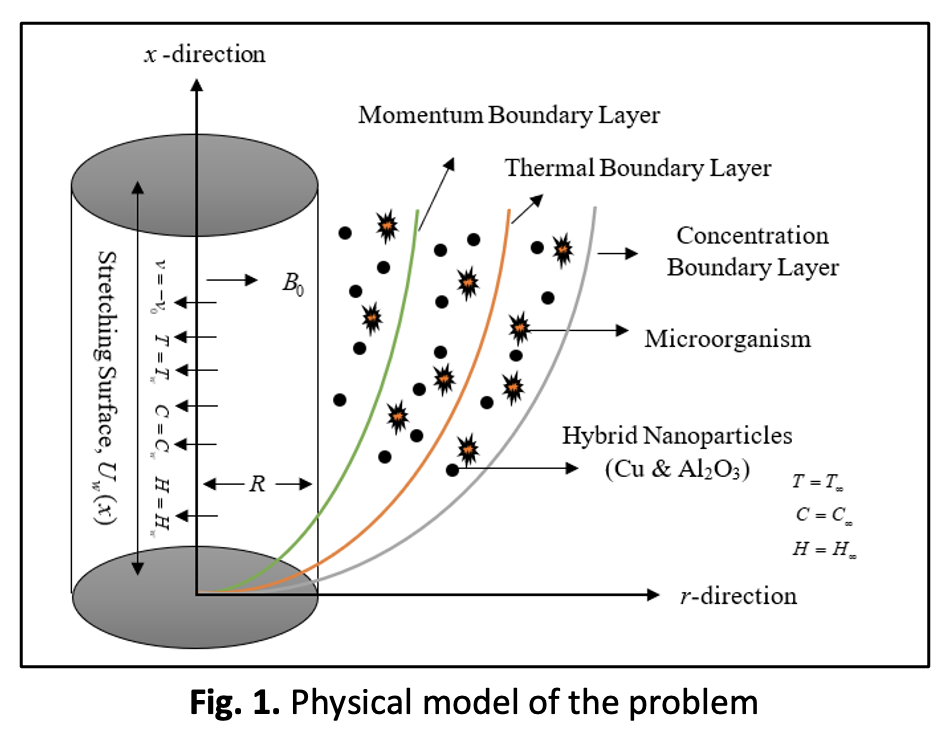Magnetohydrodynamic of Copper-Aluminium of Oxide Hybrid Nanoparticles Containing Gyrotactic Microorganisms over a Vertical Cylinder with Suction
DOI:
https://doi.org/10.37934/araset.28.2.222234Keywords:
Magnetohydrodynamic, Gyrotactic Microorganisms, Hybrid Nanofluid, Suction, Stretching CylinderAbstract
The boundary layer flow with heat and mass transfer are important since the quality of final product depends on factors such as the rate of cooling and stretching phenomenon. The pivotal aim of this research is to address magnetohydrodynamics (MHD) copper-aluminium oxide hybrid nanoparticles containing gyrotactic microorganisms over a stretching vertical cylinder with suction. The mathematical model has been formulated based on Tiwari-Das nanofluid model. Two types of nanofluid containing Copper (Cu) and Aluminum Oxide (Al2O3) immersed in water is considered in this study. In the analysis, the governing partial differential equations (PDEs) are transformed into a set of ordinary differential equations (ODEs) by a similarity transformation. Corresponding boundary conditions are analysed numerically along with these equations and are programmed in MATLAB software through the bvp4c method to obtain the solutions. The numerical solutions are obtained for the skin friction coefficient, the local Nusselt number, local Sherwood number and local density of motile microorganism as well as velocity, temperature, concentration, and microorganism profiles. The present analysis is validated by comparing with previously published work and found to be in good agreement. The effects of the parameter are analysed and discussed. According to the findings, suction increases shear stress, heat transport rate, mass transfer, and mass diffusivity. Moreover, hybrid nanofluid was discovered to be faster than nanofluid in terms of transit rate. Furthermore, the local density motile microorganism bioconvection Peclet number and bioconvection Lewis number increased.Downloads

Downloads
Published
2022-10-25
How to Cite
Siti Khuzaimah Soid, Afiqah Athirah Durahman, Nur Hazirah Adilla Norzawary, Mohd Rijal Ilias, & Amirah Mohamad Sahar. (2022). Magnetohydrodynamic of Copper-Aluminium of Oxide Hybrid Nanoparticles Containing Gyrotactic Microorganisms over a Vertical Cylinder with Suction . Journal of Advanced Research in Applied Sciences and Engineering Technology, 28(2), 222–234. https://doi.org/10.37934/araset.28.2.222234
Issue
Section
Articles




























